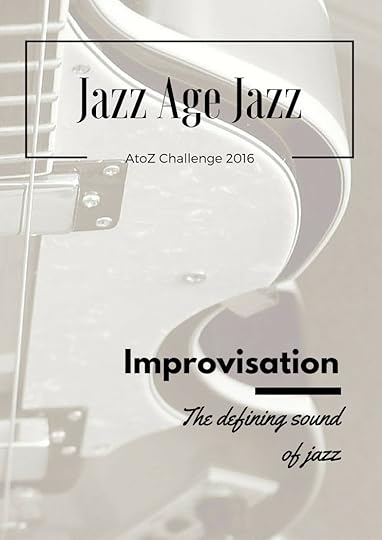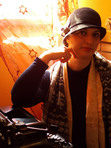Improvisation (AtoZ Challenge 2016 – Jazz Age Jazz)
JAZZ AGE JAZZ - Improvisation #AtoZChallenge #jazz and the freedom to create music together
Click To Tweet
Louis Armstrong said that if you need to ask what jazz is, you’ll never know. It’s true that the nature of jazz is elusive, even experts are often at a loss to define it as opposed to other forms of music. But there’s something everyone agrees with: jazz is about improvisation.
There’s a common misconception that improvisation happens randomly. Because many small jazz bands don’t read music when they perform, listeners may have the impression the performers are going along completely freely. In fact, the contrary is true. Spontaneous jazz improvisation requires a deep understanding of the music and its workings. Jazz players will chose phrases which structure is so familiar to them, they intuitively know where it’s going even though it’s been created in that instant. The musicians all know the tune and the role of their instrument inside the tune, and so they can spontaneously create different forms of the theme and variations.
The guitar, piano, bass and drums, while all able to solo, basically provide the rhythm and harmony over which the soloist will create improvised variations. The structure is flexible so that the soloist may venture in various directions depending on the inspiration of the moment. A Jazz musician is creating spontaneous art every time he or she plays music. In fact, spontaneity has always characterized Jazz music’s finest improvisers.
Freedom in jazz improvisation comes from an understanding of structure. It may seem as the soloist may do whatever they like, but in fact the soloist is following a complex set of rules. Being creative means knowing how to move inside that context and how to bend it to your personality and creativity.
 Fletcher Handerson
Fletcher HandersonThe role of the soloist became very important from the beginning of the 1930s, but early jazz was characterised by a different kind of improvisation, what was called “collective improvisation”. This way of making music leans very strongly on call-and-response, both among musicians and between musicians and audience. In the 1920s, ballrooms, nightclubs, speakeasies were ideal places where improvisation and free audience/performers interaction happened. The unpredictable mix of music, guests, dancers and bathtub gin was explosive. It could mix every night in a different way, Anything could inspire the performers to a new path in the music.
But as the decade wore on, something happened. Jazz started to be recorded and those records were extremely popular. Recordings needed to be standardised and that dictated which performance and which actual improvisation would be preserved. Aspiring musicians increasingly learned jazz from those recordings rather than live, as their predecessors had done. Over time, this subtly changed the way jazz was played and improvised. By the end of the 1920s, jazz had surrendered its popularity to swing.
————————————————————————————————————————————
RESOURCES
Ogren, Kathy J., The Jazz Revolution. Twenties America and the Meaning of Jazz. Oxford University Press, New York, 1989
Jazz in America –
JazzPath – The case for improvisational melodic tructures
Smashwords | Barnes&Nobles | Kobo | iBookStore
And many other stores
The post Improvisation (AtoZ Challenge 2016 – Jazz Age Jazz) appeared first on The Old Shelter.






